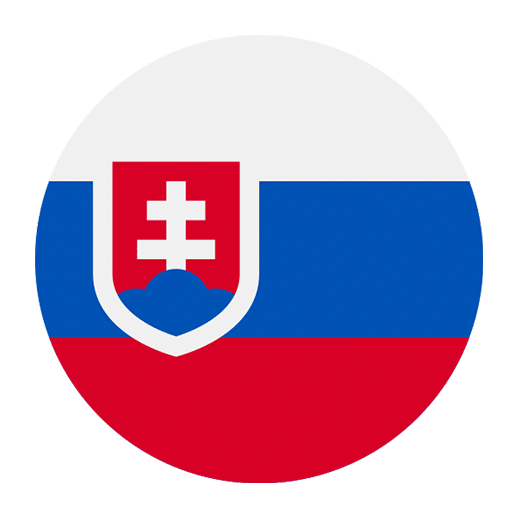Slovak is a beautiful and richly textured language spoken by over 5 million people, primarily in Slovakia. As a member of the West Slavic language group, it shares many characteristics with Czech, Polish, and other Slavic languages. However, for English speakers, translating Slovak can pose a unique set of challenges. This article aims to explore these challenges and offer strategies to navigate them effectively.
The Complexity of Slovak Grammar
One of the first hurdles English speakers encounter when learning or translating Slovak is its complex grammar. Unlike English, which has relatively simple grammatical rules, Slovak is known for its intricate system of cases, genders, and verb conjugations.
Cases
Slovak uses a case system to indicate the grammatical function of a noun within a sentence. There are six main cases in Slovak: nominative, genitive, dative, accusative, locative, and instrumental. Each case modifies the ending of a noun, pronoun, or adjective, and the choice of case depends on the role the word plays in the sentence (subject, object, etc.).
For example, the word “house” in Slovak is “dom.” Depending on its function in the sentence, “dom” might change to “domu” (genitive), “domu” (dative), “dom” (accusative), “dome” (locative), or “domom” (instrumental).
English speakers, who are not accustomed to modifying word endings to convey grammatical relationships, may find this system particularly challenging. Memorizing the rules for each case and knowing when to apply them requires practice and attention to detail.
Genders
Another layer of complexity in Slovak grammar is its gender system. Slovak nouns are classified into three genders: masculine, feminine, and neuter. Each gender has its own set of rules for declension and agreement with adjectives and verbs.
For instance, the word “friend” can be “priateľ” (masculine) or “priateľka” (feminine). The accompanying adjectives and verbs must agree in gender. For example:
– Masculine: “Môj priateľ je šťastný.” (My friend is happy.)
– Feminine: “Moja priateľka je šťastná.” (My friend is happy.)
English speakers, who do not have to consider gender in this way, may struggle to remember and apply these rules correctly.
Verb Conjugations
Verb conjugation in Slovak is also more complex than in English. Slovak verbs change form based on person, number, tense, mood, and sometimes gender. There are three main verb conjugation patterns, and each pattern has its own set of rules.
For example, the verb “to be” in Slovak is “byť.” Here is how it conjugates in the present tense:
– Ja som (I am)
– Ty si (You are)
– On/ona/ono je (He/she/it is)
– My sme (We are)
– Vy ste (You are, formal/plural)
– Oni/ony sú (They are)
Mastering these conjugation patterns requires consistent practice and exposure to the language.
False Friends and Cognates
False friends are words that look similar in two languages but have different meanings. Slovak and English have several false friends that can lead to misunderstandings if not recognized.
For example:
– “Aktuálny” in Slovak means “current” or “up-to-date,” not “actual.”
– “Divadlo” means “theater,” not “divided.”
– “Sympatický” means “nice” or “pleasant,” not “sympathetic.”
Recognizing and memorizing these false friends is crucial for accurate translation and comprehension.
Idiomatic Expressions
Idiomatic expressions can be particularly tricky when translating from Slovak to English. Idioms often do not have direct equivalents in other languages, and their meanings can be lost in translation if not handled carefully.
For example, the Slovak idiom “Mať hlavu v oblakoch” literally translates to “To have one’s head in the clouds,” which is similar to the English idiom “To have one’s head in the clouds” meaning to be daydreaming or not paying attention.
However, not all idioms have such direct parallels. Consider the Slovak idiom “Hodiť flintu do žita,” which literally means “To throw the rifle into the rye.” The English equivalent is “To throw in the towel,” meaning to give up. Translators must be familiar with both the literal and figurative meanings of idioms to convey the intended message accurately.
Word Order and Sentence Structure
Slovak and English have different word order conventions, which can pose a challenge for translators. Slovak is a relatively flexible language in terms of word order due to its case system, which clearly indicates the grammatical role of each word. However, the most common word order is Subject-Verb-Object (SVO).
In contrast, English has a more fixed word order, and deviations from the standard SVO structure can change the meaning of a sentence. Translators must be mindful of these differences and adjust the word order appropriately to maintain the intended meaning.
For example:
– Slovak: “Ján číta knihu.” (Ján reads a book.)
– English: “Ján reads a book.”
However, if we change the word order in Slovak to “Knihu číta Ján,” it still means “Ján reads a book,” but with a different emphasis. In English, “A book reads Ján” would be incorrect and nonsensical.
Cultural Context and Nuances
Language is deeply intertwined with culture, and translating Slovak to English requires an understanding of the cultural context and nuances. Certain phrases, customs, and references may not have direct equivalents in English, necessitating a more adaptive approach to translation.
For instance, Slovakia has a rich tradition of folk tales and proverbs that may not be familiar to English speakers. Translating these cultural elements requires not just linguistic skill but also cultural sensitivity and knowledge.
Consider the Slovak proverb “Kto chce psa biť, palicu si nájde,” which literally means “He who wants to beat a dog will find a stick.” The English equivalent is “Where there’s a will, there’s a way,” but the cultural imagery is different. A translator must decide whether to preserve the original imagery or adapt it to something more familiar to the target audience.
Strategies for Navigating Slovak Translation Challenges
Given the complexities outlined above, what strategies can English speakers employ to navigate the challenges of Slovak translation effectively?
Study and Practice
There is no substitute for consistent study and practice. Engaging with Slovak through reading, writing, speaking, and listening will help internalize its grammatical rules and vocabulary. Language learning apps, online courses, and language exchange partners can be valuable resources.
Use Quality Resources
Invest in quality resources such as comprehensive grammar guides, bilingual dictionaries, and specialized translation tools. These resources can provide clarity on complex grammatical rules and offer reliable translations for challenging words and phrases.
Seek Cultural Immersion
Immerse yourself in Slovak culture to gain a deeper understanding of the language’s nuances. Watching Slovak films, reading Slovak literature, and participating in cultural events can provide valuable context and improve your translation skills.
Consult Native Speakers
When in doubt, consult native Slovak speakers. They can offer insights into idiomatic expressions, cultural references, and grammatical subtleties that may not be evident from textbooks or online resources.
Use Translation Tools Wisely
While translation tools like Google Translate can be helpful, they are not infallible. Use them as a starting point but verify their accuracy with reliable resources or native speakers. Be cautious of literal translations that may not capture the intended meaning.
Practice Patience and Persistence
Learning and translating Slovak is a challenging but rewarding endeavor. Be patient with yourself and persistent in your efforts. Celebrate your progress and learn from your mistakes.
Conclusion
Translating Slovak to English presents a unique set of challenges, from mastering complex grammatical rules to navigating cultural nuances. However, with consistent study, quality resources, cultural immersion, and the support of native speakers, English speakers can overcome these challenges and achieve proficiency in Slovak translation. The journey may be demanding, but the rewards of understanding and communicating in this rich and beautiful language are well worth the effort.

